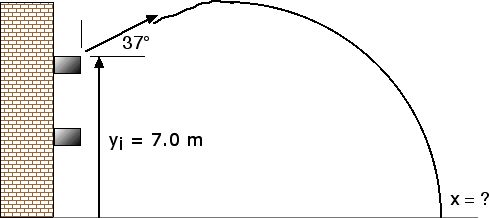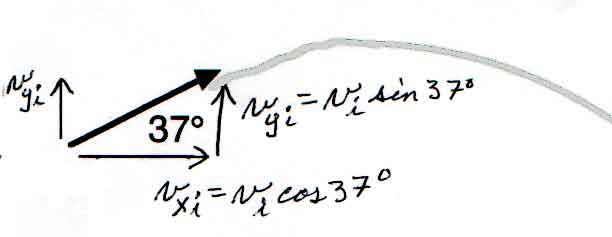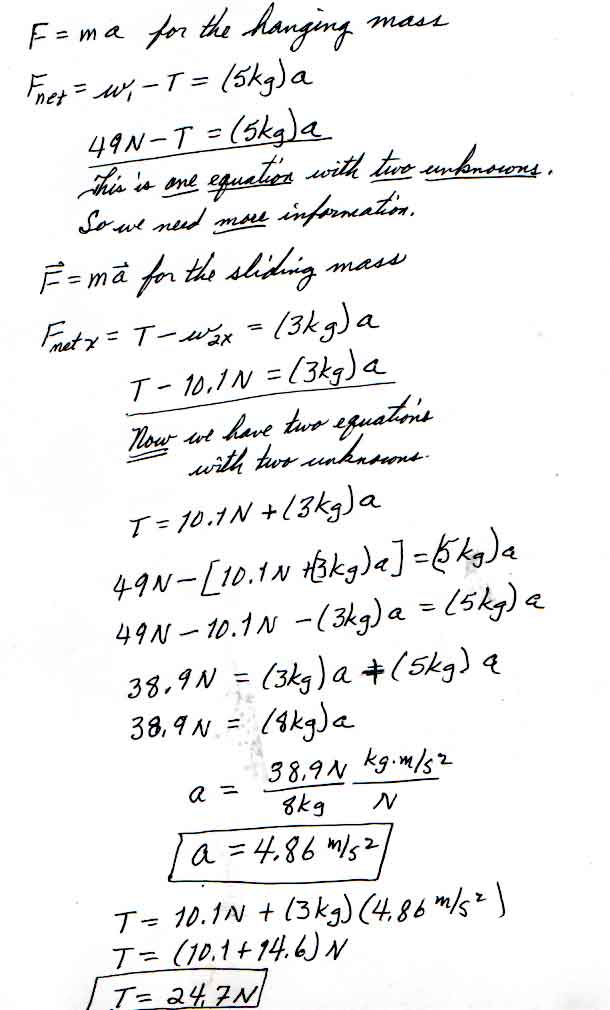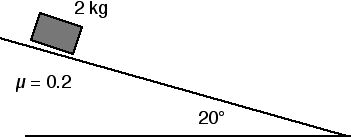

PHY 1151
Fall 2002
First Hour Exam — version 2.0
September 25, 2002
Statistics:
High: 92
Mean: 52
Low: 5
s = si + vi t + (1/2) a t2
v = vi + a t
v2 = vi2 + 2 a (s - si)
sin ![]() = opp/hyp
= opp/hyp
cos ![]() = adj/hyp
= adj/hyp
tan ![]() = opp/adj
= opp/adj
F = m a
F12 = – F21
fs,max = µs n
fk = µk n
g = 9.8 m/s2 ![]() 10 m/s2
10 m/s2
1. Concept Questions:
a) Galileo first clearly understood motion. Galileo may be described as
the Father of Modern Science. Why is that?
People had talked about or discussed motion long before Galileo, of course. Even the ancient Greeks had talked and thought and taught about motion. But Galileo is the first person who went out and conducted experiments and looked to see if his predictions agreed with experimentally measureable results.
This is the "hallmark" or "chief characteristic"
of modern science -- that any theory must agree with experimental results if
it is to be believed.
b) What are Newton’s Three Laws of Motion?
i) In the absence of a net force,
a body at rest will remain at rest and a body in motion will continue in motion
along the same straight line with the same velocity.
ii) F = m a;
If there is a net force on an object, it will accelerate with an acceleration
in the direction of the net force and with an acceleration proportional to the
net force and inversely proportional to the mass (a = F / m).
iii) F12
= - F21
c) If a block is sitting at rest on a level surface, what is the friction
force on the block?

Since there is no external force with a horizontal component,
the Friction force is also zero.
d) A newton (N) is a unit of force. In terms of kg, m, and s, what is
1 N?
1 N = ?
F = m a
1 N = (1 kg) (1 m/s2)
1 N = 1 kg-m/s2
| 2. A hot-air balloon, ascending at 5
m/s, is 20 m above the ground when a sandbag breaks loose. Call this time t = 0. a) How high above the ground does the sandbag go? b) When does the sandbag hit the ground? Or, how long is the sandbag in the air? c) How fast is the sandbag going when it hits the ground? |
 |



3. A ball is thrown from a third-floor balcony, 7.0 m above the parking
lot below. The ball is thrown with an initial velocity of 10.0 m/s, at
an angle of 37° above the horizontal.
a) What are the horizontal and vertical components of its initial velocity?
b) How long is the ball in the air, before it strikes the parking lot
below?
c) How far from the building does it strike the parking lot below?




4. A 3 kg block sits on a smooth (frictionless) plane inclined
20° above the horizontal. It is connected by a string to a 5 kg mass that
hangs suspened from the other end of the string as shown in the sketch above.
a) Draw large, clear, complete “free-body” diagrams
showing all the forces on the two masses.
b) Apply Newton’s Second Law, F = m a, to the two
masses and find the acceleration of the system and the tension
in the string.



5. A 2-kg block slides down a plane inclined at 20° from the horizontal
as shown in the diagram above. The coefficient of sliding friction between the
block and the plane is µ = 0.2.
a) Make a large, good, clear, complete “free-body diagram”
showing all the forces on the 2-kg mass.
b) Apply Newton’s Second Law, F = m a, to the mass
and find the acceleration of the block down the inclined plane.
c) How fast will the block be moving when it has traveled 1.0 m down
the plane?

